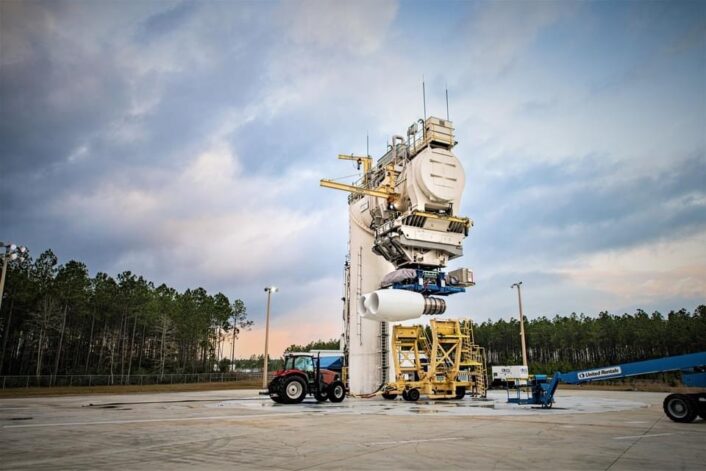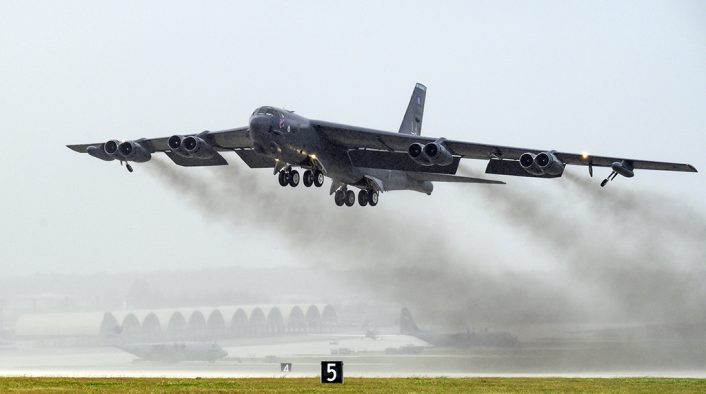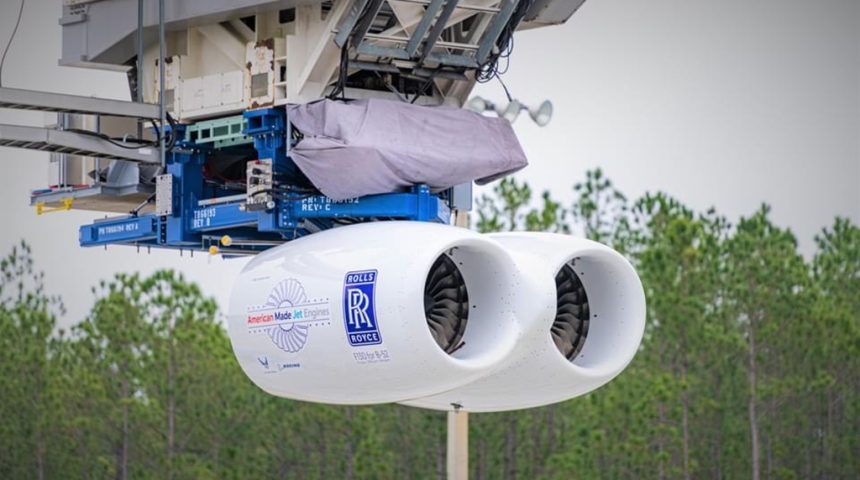Rolls-Royce is on track to to complete initial F130 engine testing for the United States Air Force B-52J Stratofortress by the end of the year.
Testing of the new engines for the B-52J continues. According to Rolls-Royce, the initial F130 testing will be completed by the end of the year. Continued Rapid Twin Pod testing at the company’s outdoor test facility at NASA Stennis Space Center in Mississippi, “have accomplished all of Rolls-Royce’s initial goals and allowed for the gathering of unprecedented amounts of data early in the program, further de-risking the integration of the F130 engine onto the B-52J.”
Rolls-Royce announced it launched F130 engine testing on Mar. 1, 2023. The RR F130 engines were selected in 2021 to replace the bomber’s Pratt & Whitney TF33-PW-103s, used on the Stratofortress fleet since the 1960s.
The TF-33 engine will no longer be supportable beyond 2030, so the B-52 Commercial Engine Replacement Program was kicked off in 2018, with GE Aviation, Pratt & Whitney and Rolls-Royce competing for the contract. The winning offer from Rolls-Royce is the military version of the BR725 engine used by the Gulfstream G650 business jet and already powering both the C-37 and E-11 BACN in service with the U.S. Air Force.

Candice Bineyard, Director, Programs – Defense at RR said in a public statement:
“We are thrilled with the progress we have made with this milestone testing program. The engines are operating perfectly so far – matching all of our predictions on inlet performance. We look forward to continuing our close collaboration with the Air Force and Boeing as we complete testing at NASA Stennis Space Center and prepare for Critical Design Review,”
Rolls-Royce is on track for Critical Design Review to begin in the first quarter of 2024. Ground and flight test of the engines is currently on track to start on time in 2024 through 2026.
The Air Force plans to finalize integration activities and deliver the first lot of B-52 modified aircraft in the 2026-2027 timeframe, with initial operational capability expected in 2030. The new engines are expected to remain on the B-52 for the reminder of the aircraft life, through at least 2050 increasing fuel efficiency and range, reducing emissions in unburned hydrocarbons, and significantly reducing maintenance costs.
Some wondered why the U.S. Air Force did not choose to use four larger turbo fans instead of eight smaller ones. Among the reasons that barred the four-engine solution there are the limited takeoff clearance they would have provided and the need for a more radical redesign of the engine/wing/pylon interface, resulting in a more complex and riskier conversion.
Anyway, compared to the current TF-33s, the new F130 will be much quieter and produce only minimum smoke: in other words, the B-52J will not be characterized by the long and dark smoky trail that has become a distinguishing feature of the iconic strategic bomber.

As happend with the B-52G, when new engines were the main reason the B-52G was redesignated as B-52H in 1962, with the new F130 engines, the Stratofortress will be given the designation B-52J.

Along with the new engines, the B-52Js will embed other interesting upgrades: the bomber is to get a modified variant of the F/A-18EF Super Hornet’s APG-79 AESA radar; a more streamlined profile and a cleaner look with the removal of the blisters that currently house the AN/ASQ-151 Electro-Optical Viewing System (EVS); two large humps over the fuselage, near the wing roots, that could be used to host classified equipment (possibly associated with wideband satellite communications systems); and a cockpit upgrade, with “new 8 x 10 digital displays, hybrid mechanical-to-digital throttle system, new data concentrators units (2x), new engine fault maintenance recorder, new engine air data system (and) modified system panels.









